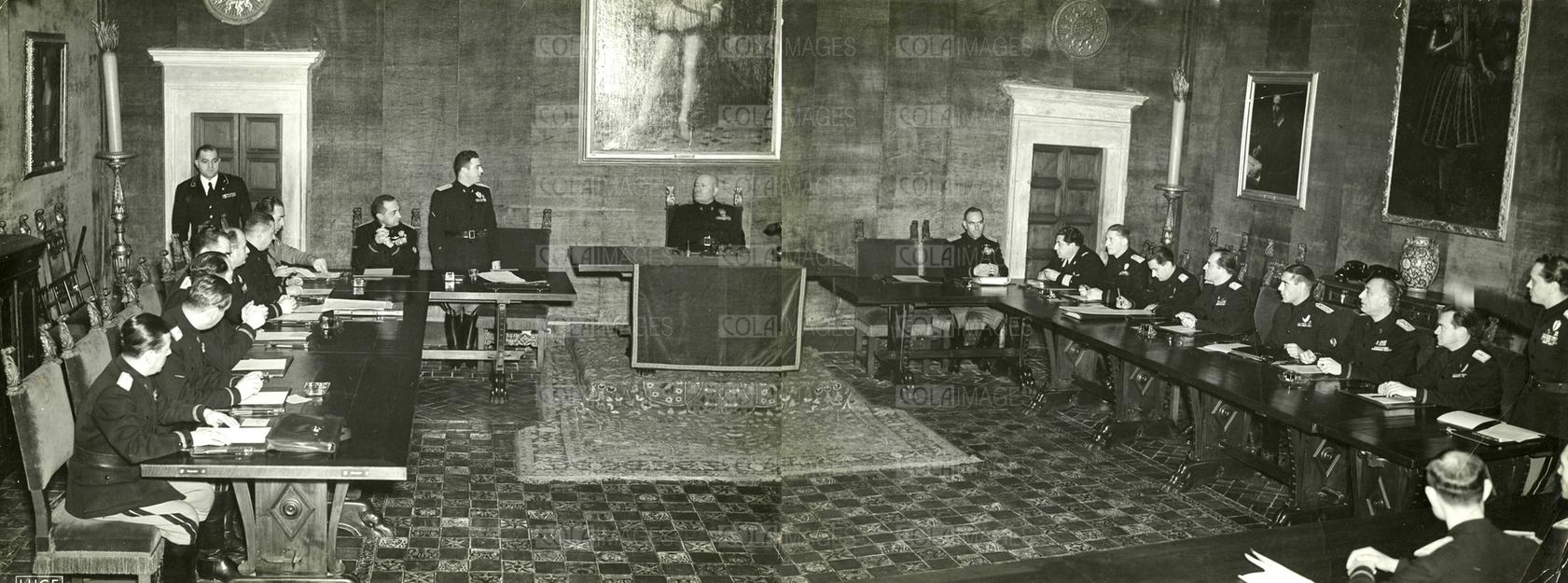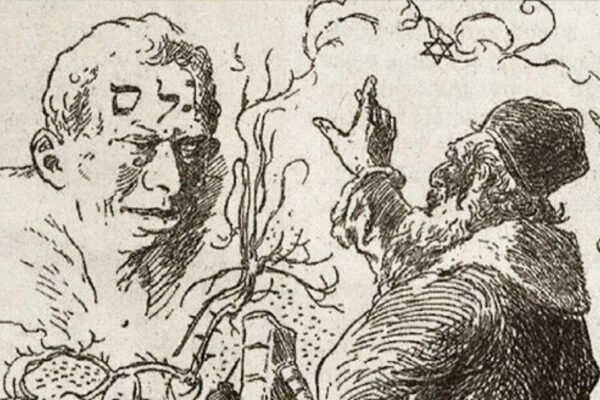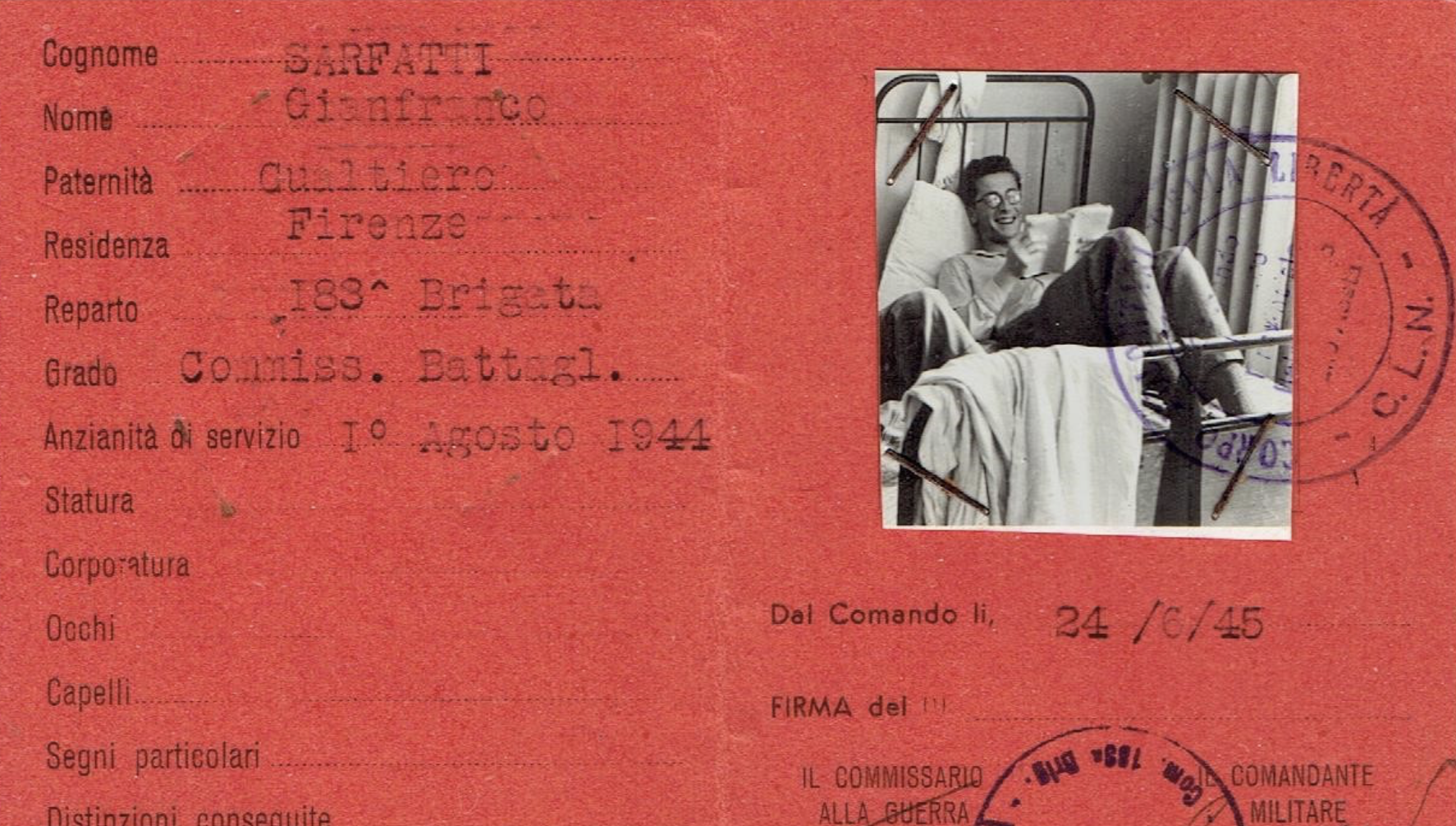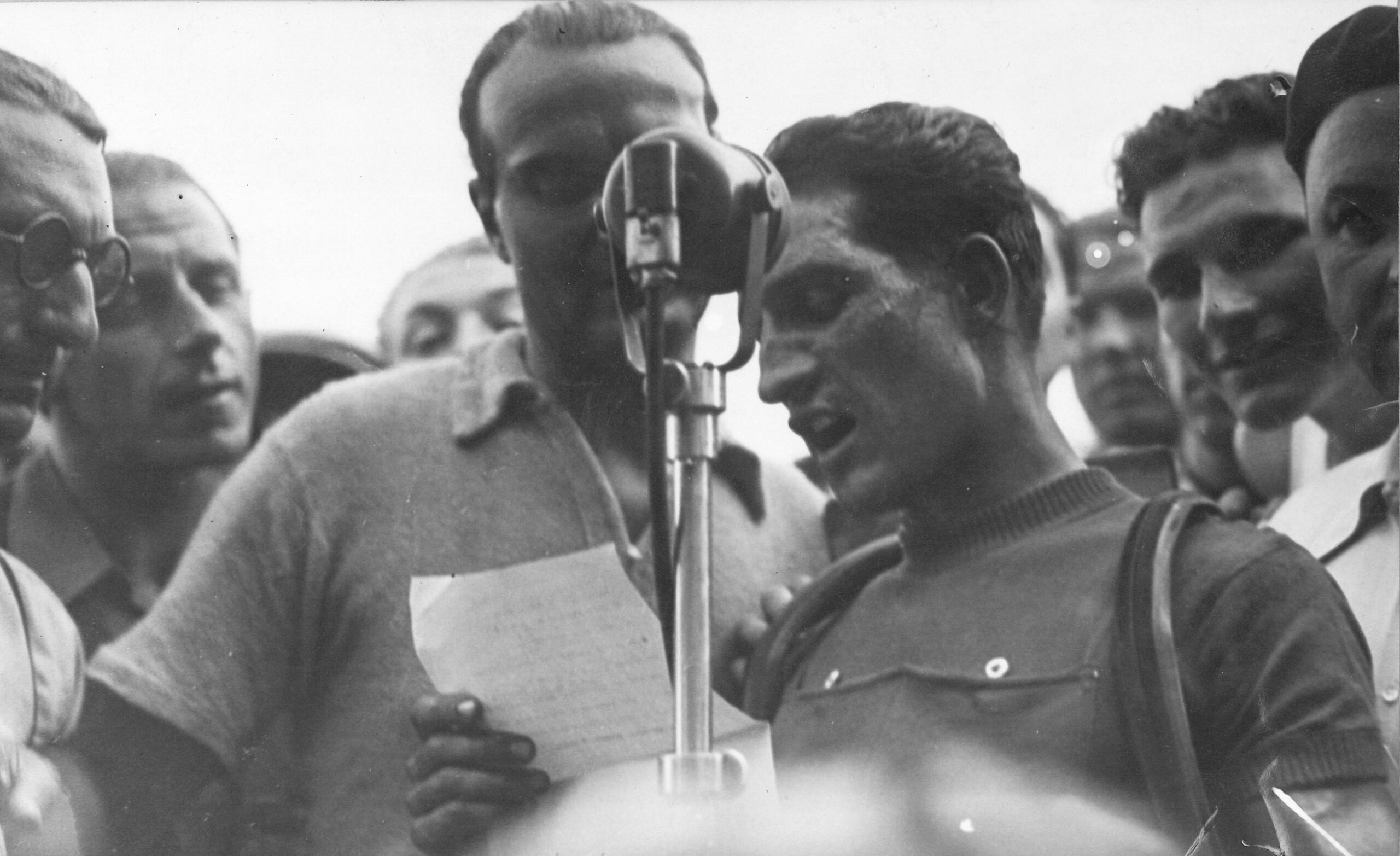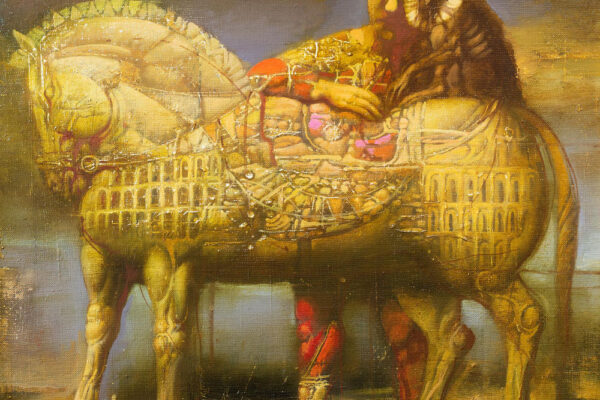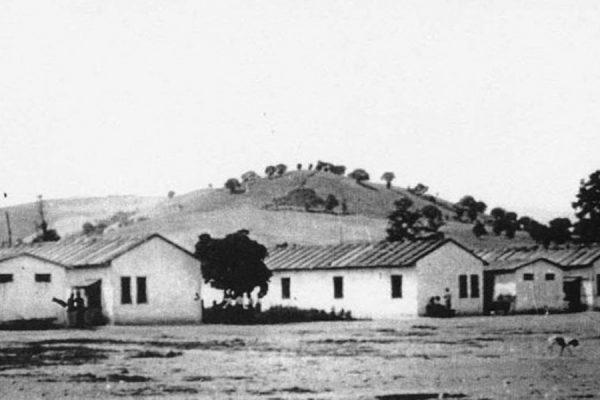A New Issue of Telos: The Particularities of Fascist Anti-Semitism
ario Critico. About Telos – www.telospress.com Timely, provocative, and independent: Telos is a must-read for anyone with a serious interest in politics, philosophy, critical theory, and culture. Since 1968, the quarterly journal Telos has served as the definitive international forum for discussions of political, social, and cultural change. Readers from around the globe turn to Telos to engage with the sharpest minds in politics and philosophy, and to discover emerging theoretical analyses of the pivotal issues of the day. Over its long history, Telos has charted new territory in political and philosophical analysis. Contributors to the journal have pioneered the critical frameworks necessary for interpreting the unfolding political, social, economic, and cultural transformations in the world at large. From its studies of dissidence in Eastern Europe during the Soviet era, to its investigations into the history and ideology of global terrorism, to its rigorous critiques of authoritarian regimes, Telos has consistently been at the forefront of the political-philosophical discussion. As Paul Piccone‘s life-long project, Telos has occupied a crucial position in the English‑speaking world’s analyses and applications of contemporary critical theory. Since beginning at SUNY-Buffalo on May 1, 1968, with a tiny group of graduate students in charge of its content and direction, it has afforded an enduring outlet for many unorthodox thinkers from Europe, North America, and elsewhere to question the common beliefs about the Cold War, leftist mass politics, sixties’ radicalism, modern research universities, American democracy, Eastern European Communism, popular culture, the expanding European Union, and the New Left. Under the editorship of Russell A. Berman, Telos continues to advance this commitment to exploring the complex interactions of philosophy and politics, broadly understood, beyond disciplinary narrowness or orthodox opinions.
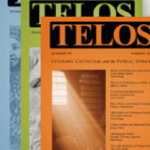
When we examine European anti-Semitism during the 1930s, and especially the Shoah, the case of Germany looms so large that the Nazi regime immediately appears as the paradigmatic form of fascism and the manifold policies directed against European Jewry during the 1930s little more than German racial policy writ large. Without in any way trivializing or, worse, relativizing in an ethical sense the German case, one might nevertheless suggest that it occupies too much conceptual space and occludes a more precise comparative understanding of other European cases where anti-Semitic policies had been autonomously generated, relatively independent of direct Nazi pressure. In this sense, decentering the German case might be a necessary first step toward a less perspective on what happened elsewhere.
Accordingly, we turn our attention to Italy, where fascism first emerged during the early twenties and lasted roughly twice as long as the German case. Unlike Nazism, racism and anti-Semitism were not part of Fascism’s formative program and ideology; in fact, Jews had figured among Fascist leadership and the rank and file, and, as late as the midthirties, Nazis had been viewed with suspicion, particularly on account of their crude, biological racism, or roba da biondi, “blond bullshit,” as Mussolini put it in a meeting with young Fascist intellectuals from Florence in 1934. However, during the late thirties, the Fascist regime abruptly turned toward anti-Semitism, enacting harsh discriminatory laws against the Jews. After the war, Italy was hardly alone in blaming such policies exclusively on the Germans, whether by diplomatic alliance or through annexation or occupation, though in Italy and elsewhere there had been locally based, autonomously generated anti-Semitic measures that had little to do with any overarching German master plan. I should note that, to date, no one has discovered a shred of evidence in German or Italian archives that Germany in any way pressured or encouraged the 1938 campaign against the Jews or, for that matter, the anti-Semitic legislation that almost immediately went into effect. A focus on Italy would suggest something that might seem altogether remarkable and quite unsettling: that, unlike Germany, neither an anti-Semitic past nor an initial, formative ideological commitment to racism was necessary for a later, seemingly contradictory, mid-course turn toward State anti-Semitism.
George Mosse and many others have argued that the anti-Semitism that surfaced in Europe during the thirties was largely a redeployment of movements and ideologies that had emerged earlier, during the late nineteenth and early twentieth centuries. This position, too, needs qualification, as post-unification Italy experienced nothing comparable to what took place in such major cases as France, Germany, Austria, and Russia. Of course, no Christian nation was totally free of anti-Semitism, yet, by way of example, unlike France there were no anti-Semitic leagues or Dreyfus affairs, nor was there a largely anti-Semitic literary establishment; unlike Austria there were no self-professed, anti-Semitic mayors of major cities; unlike Germany no long, protracted debates concerning Jewish emancipation; unlike Russia, no pogroms.
These were all absent in Italy, whose small Jewish population was so assimilated that it had the highest intermarriage rate of any Jewish community in Europe (roughly thirty percent), hardly an indicator of deep-seated prejudice. Add to that the fact that, by the outbreak of World War I, Italy—alone in Europe—already had three prime ministers of Jewish origin (Sidney Sonnino, Alessandro Fortis, and Luigi Luzzatti), and it would be difficult to argue that somehow prior anti-Semitic history was an explanatory variable to account for Fascist Italy’s campaign against the Jews in 1938. In fact, what makes the Italian case so fascinating, in a comparative sense, is the relative absence of factors typically identified with 1930s anti-Semitism in Central and Western Europe, such as separate linguistic and cultural Jewish identities, big Jewish banks, and, especially, significant immigration of Ostjuden (the great westward migration of East European Jews to Vienna, Berlin, Paris, London, and New York, almost totally bypassed Italy).
At the very moment that Austria’s capital, Vienna, had a self-professed anti-Semitic mayor, Karl Lueger, the mayor of Italy’s capital, Rome, was a Jew, Ernesto Nathan, who served in this capacity with great distinction during the premierships of the aforementioned Fortis, Sonnino, and Luzzatti. While the Dreyfus affair was still unfolding in France, a Jewish general, Giuseppe Ottolenghi, was Minister of War in Italy. A celebrated proverb among French Jews was “heureux comme un Juif in Italie,” where Jews served as well as cabinet ministers, prefects, and high-level military officers; they were leaders in business and commerce, and accounted for seven percent of the professoriat, though Jews constituted only one-tenth of one percent of the general population. No serious scholar looking at pre-Fascist Italy, or even the early years of Fascism, would claim anti-Semitism to be a distinctive factor of Italian society or a serious issue that might necessitate an unprecedented political solution. In his famous 1933 interviews with Emil Ludwig, Mussolini ridiculed Nazi racism, stated there were no pure races, and denied that anti-Semitism was a problem in Italy.
One might briefly note another important difference with the German case regarding anti-Semitism. Not only did the turn toward anti-Semitism occur relatively late in the regime’s history (during the sixteenth year of its twenty-year duration), but those directly responsible for its implementation were hardly convinced anti-Semites or ones of long standing. Nazi leaders often prided themselves on never having even shaken the hand of a Jew, whereas in Italy there never had been this biological-hygienic fixation, even with respect to intimate relations. Mussolini had any number of Jewish mistresses, most notably Margherita Sarfatti, who, during the twenties, undoubtedly was the dominant cultural figure in Italy, as well as the author of the Duce’s official biography Dux. His daughter Eda had been engaged to a Jew, but Mussolini forced an end to this relationship after the Lateran Accords with the Vatican in 1929. She then married Count Galeazzo Ciano, a notorious philanderer who, like Mussolini, had multiple Jewish mistresses. Giuseppe Bottai, who as Minister of Public Education would expel Jewish students and professors from Italian schools and universities in 1938, just five years earlier had joined the philosopher Giovanni Gentile in helping establish on Italian soil private schools for German Jewish children (Landschulheime) whose educational opportunities in Germany already had become uncertain.
Though in 1938 Bottai stated that schools, so central to the transmission of Fascist values and Italian identity, had to be defended and protected from any Jewish presence, he himself had cultivated friendships with Jews as a teenager at Rome’s celebrated Liceo Classico Tasso, none of whom apparently had infected him with the distinctively alien, nomadic, degenerate influences he later attributed to the “Jewish spirit.” Jewish friendships also marked, again without apparent injury, Bottai’s days as a Futurist, then a Fascist. In fact, the other cofounder of Bottai’s influential journal Critica Fascista, Gino Modigliani, was a Jew, as were some of his best friends and collaborators, such as Enrico Rocca and Gino Arias. Similarly, Alessandro Pavolini, who became the influential Minister of Popular Culture during 1939, when the racial laws were being rigorously instituted, had been partially raised by a Jewish couple, Giorgio and Elisa Uzielli, when his father, a famous professor of Sanskrit, ran off with a Finnish woman half his age. As a teenager in Florence, Pavolini was friendly with Carlo and Nello Rosselli, Jewish brothers who would become major anti-Fascist intellectuals, murdered in exile in France in June 1937. Pavolini’s brother, Corrado, himself a Fascist writer of some note, actually married a Jew.
During the first years of Nazi rule, Italy, and especially Rome, became a haven for prominent German Jews. When George Mosse’s family arrived in Rome, a bouquet of flowers for his mother greeted them at their hotel, sent by no less than Mussolini, who knew that Rudolf Mosse had been a powerful publishing magnate in Berlin. In 1934 Mussolini brought to Rome Rudolf Arnheim, a German-Jewish authority on cinema, to teach at a new center for experimental film housed in his personal residence, Villa Torlonia. There Arnheim taught a young generation of filmmakers, later to become famous after the war, and collaborated in the prestigious film journal Cinema, edited by Mussolini’s son Vittorio. Arnheim was not alone.
Soon he would be joined by such other German-Jewish notables as Walter Benjamin, Max Reinhardt, Max Neufeld, and Max Ophüls, whose film La signora di tutti was nominated for the best film of 1934 (the Mussolini Cup) at the Venice Film Festival as Italy’s official entry. Also nominated, among seven finalists for the Mussolini Cup in 1934, were films by two other Jews: George Cukor, a U.S. entry for Little Women, and Alexander Korda, the British entry for The Private Lives of Don Juan. In 1933, Max Reinhardt produced A Midsummer Night’s Dream in Florence and, in 1934, The Merchant of Venice in Venice. Max Neufeld, a Jewish actor in Austria, later a celebrated film director in Germany, left Berlin for Rome due to Nazi racial legislation. Because he was able to secure documentation that his mother was a gentile, Neufeld was able to continue making films in Italy after 1938, right through the time of his death in 1957. Ironically, his first major Italian film, Mille lire al mese, was released in 1939, right after the racial laws had gone into effect.
And yet there already were gray zones as early as March 1934, when the specifically Jewish identity of anti-fascists arrested at Ponte Tresa, on the Swiss border, was underscored in the Fascist press, especially in Il Tevere, soon to become the most anti-Semitic daily in Italy. Though not officially a government or party publication, Il Tevere was heavily subsidized by the State, and its editor, Telesio Interlandi, was personally close to Mussolini. Interlandi had campaigned against the presence in Italy of foreign filmmakers, particularly Ophüls, who he had called a “mediocrity,” though obviously with little effect at the time. Behind closed doors there were high-level discussions about disproportionate Jewish influence, particularly in publishing, the universities, the military, and the diplomatic corps. With League of Nations sanctions against Italy, following the invasion of Ethiopia in 1935, international Jewry was identified publicly as the chief enemy of Fascism, one that had orchestrated the hostile actions taken in Geneva. Legislation targeted to “defend the race” in Ethiopia, prohibiting sexual relations between Italians and Ethiopians, officially introduced race for the first time as a public policy concern. It then was extended to Jews as well, once diplomatic relations with Germany became consolidated in 1937–38.
Racial policy against the Jews can be divided into two periods. The first (1938–43) was instituted by the Fascist State. It effectively removed Jews from public life and rendered them second-class citizens at best.
The second (1943–45) took place after Mussolini had been removed from power and the Germans occupied northern Italy. Mussolini was installed as head of the RSI, a puppet state that fully collaborated with the Germans in the roundup and deportation of Jews. Though this is when the Shoah, as such, came to Italy, it built seamlessly upon prior anti-Semitic policy in almost every sphere, from ideological denigration to indispensable official lists specifying the home addresses of all Jews, as well as inventories of their property.
Because the Badoglio government in the south signed an armistice with the Allies and officially became a co-belligerent, there was to be no international Nuremburg-type process in Italy, as had been the case in Germany and Japan. Moreover, all parties in the postwar anti-Fascist coalition government insisted that Italy try its own war criminals, procrastinating until the Cold War began and more pressing geopolitical concerns took priority over a public accounting of what had happened and who was responsible for war crimes and crimes against humanity. The so-called epurazione, orchestrated under the leadership of Palmiro Togliatti, Minister of Justice and head of the Italian Communist Party, emptied the jails of Fascist leaders and collaborators with Germany, many of whom returned to normal life long before victimized Jews had been able to return to their previous occupations and retrieve their pilfered property. It was precisely 8 Franklin Hugh Adler at this time that the auto-exculpatory myth of Italiani brava gente was created, differentiating the “good Italian” from the “bad German,” the “good Italians,” no less, who had saved Jews from the odious Germans. Adding external legitimacy to this myth was Allied propaganda broadly disseminated during the Italian campaign, differentiating between the “true Italians,” on one side, and, on the other, Mussolini’s RSI, which aided and abetted the “bestial” Germans, historical enemies of Italy. All but forgotten in the press and the larger public sphere for another fifteen years or so was the persecution of the Jews for five years under the Fascist State (1938–43), the silence and opportunism that marked the Italian population’s response to the racial laws, the conspicuous participation of Italy’s intellectuals and artists (including many of those who later became noted anti-Fascists), as well as the thousands who collaborated with the Germans in either passively denouncing (for quick cash) Jews in hiding or actively rounding them up and stealing their property.
The first two academic studies of Italian Jews and Fascism by Renzo De Felice (1961) and Meir Michaelis (1978) largely vindicated the Italiani brava gente myth, underscoring the underlying decency of the Italian people and attributing the anti-Semitic turn of 1938 to external factors, primarily the consolidation of diplomatic relations with Germany. In fact, it was not until the late 1980s, especially the fiftieth anniversary of the leggi razziali, that a new critical scholarship emerged, largely led and inspired by the pioneering work of Michele Sarfatti. Reviewing the totality of Italian work on Fascism produced during the past two decades, it is safe to say that no topic has received more attention than what happened to the Jews during the Fascist regime, the German occupation, and the immediate postwar period. Regrettably, little of this newer literature has been translated or received significant attention outside Italy, either among those who specialize in European fascism or those who focus on the Shoah, despite its obvious comparative value. It is for that reason that this special issue of Telos appears, featuring contributions by Italian scholars whose research illuminates what had previously been mystified and left largely to official myths and the fortunes of anecdotal apologia (most of this was empirically disproved, if not shown to be deliberately fraudulent). This is the third issue of Telos in recent years dealing with Italian Fascism. Telos 133 (Winter 2005) was devoted to new Italian scholarship on Fascism; Telos 139 (Summer 2007) was devoted to the Fascist past of Italian intellectuals.
Both touched upon issues dealing with Jews and the racial laws, and in preparing the current issue we were careful not to duplicate material previously covered. Accordingly, readers are encouraged to refer back to these previous issues to supplement or enrich what appears here.
The issue opens with a seminal essay by Guri Schwarz on the genesis of the myth of Italiani brava gente, the good Italian as opposed to the bad German, which would become a target of literally everyone who wrote about Jews under Fascism since the late 1980s. This auto-exculpatory myth not only framed common assumptions and popular understandings concerning the treatment of Jews in Italy, but it also served as an instrument of Italian diplomacy aimed at strategically differentiating Italy from Germany, playing the “Jewish card,” as it was actually referred to in official documents, that is, appealing directly to American Jews who presumably had disproportionate influence over U.S. foreign policy on matters of vital importance to Italy (postwar reconstruction, foreign aid, etc.).
Ilaria Pavan explores one of the important debates among scholars concerning the Fascist regime’s turn toward racism, whether this was a matter of continuity or discontinuity, given the ambiguities and “gray zones” that characterized the first half of the 1930s. What precipitated the 1938 campaign against the Jews? Did this signify an abrupt svolta in Fascist policy, or was it an extension of earlier, less visible anti-Semitic tendencies? <br><br>
Analisa Capristo and Giorgio Israel extend issues raised in Telos 139 regarding the Fascist past of Italian intellectuals. Capristo focuses on how Italian intellectuals reacted to the exclusion of their Jewish colleagues from universities and cultural academies. Israel turns his attention to the expulsion of Jewish professors from science departments, an especially important issue given the national and international preeminence of Italian Jews in the sciences, a story similar in many ways to what had been unfolding in Germany.
Valerio De Cesaris is a Catholic historian who has written extensively on the Vatican and Fascism, and especially the Vatican’s role in the genesis of racial policy during 1938. This has become a particularly hot issue since 2006, when Pope Benedict XVI made available to scholars documents from the Vatican Secret Archives for the period of Pius XI’s pontificate (1922–39). What emerged was a stark contrast between the fierce opposition to the racial laws on the part of Pius XI, compared to the more familiar compliant attitude assumed by his successor Eugenio Pacelli (Pius XII).
De Cesaris argues that Pius XI had two major concerns, one political, the other theological. The first had to do with Mussolini’s violation (vulnus) of the 1929 Lateran Accords, which guaranteed the Church full autonomy in matters concerning family relations and marriage. The second concern was that severing the Hebraic roots of Catholicism risked the possibility of transforming the universal faith into a Rome-based national religion dominated by Fascism, or even opening the door to the German-inspired Aryan Jesus concept. <br><br>
The final essay in this issue is a dense, historiographical critique by Michele Sarfatti of the first edition of Renzo De Felice’s Storia degli ebrei sotto il fascismo. De Felice’s Storia, as indicated earlier, was the first serious treatment of what had happened to Italian Jews. Because it tended to legitimate the myth of the Italiani brava gente and attribute the 1938 turn toward racism to German influence, almost all recent scholarship has targeted De Felice as well. Accordingly, it is not surprising that the most notable contemporary specialist should devote such extraordinary attention to De Felice, not only the first major historian to write about the Jews, but the greatest historian of Fascism as well. Non-specialists should bear in mind that De Felice wrote his book on Italian Jews years before he would begin his monumental biography of Mussolini, a later work based on a rich array of archival sources not consulted earlier. It is important to note that Sarfatti is addressing the original edition of an important book that has never gone out of print, one that expressed views that De Felice substantially revised in later editions, as well as in his Mussolini biography.
Not all the material intended for this special issue appears here because of space limitations. To be published in a future issue of Telos are two additional essays: one by Franklin Adler on Giuseppe Bottai and the Jews, and another by Ilaria Pavan on the theft of Jewish property during the 1943–45 period and its subsequent disposition after the war.


